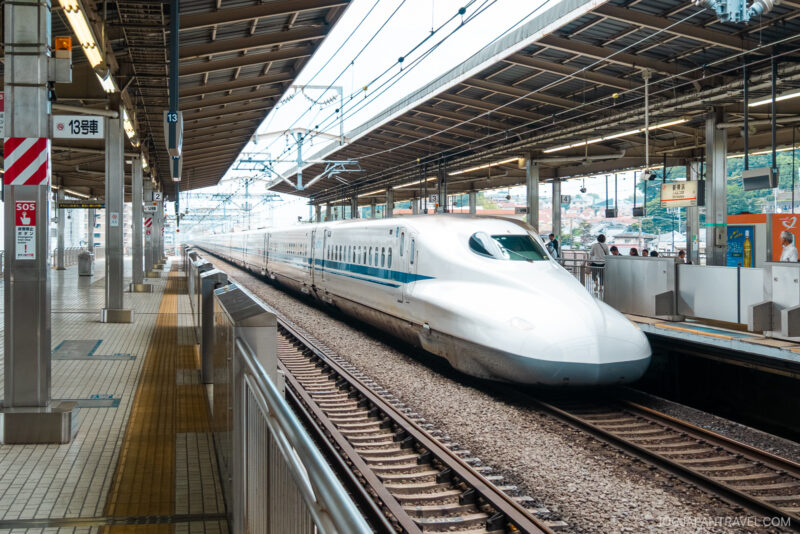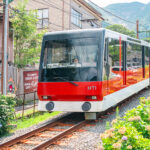This post may contain affiliate links. Please read our disclosure policy.
The Japan Rail Pass (JR Pass) offers unlimited train travel across Japan and can be a smart way to explore multiple cities while saving money.

What Is the Japan Rail Pass?
The JR Pass is a special ticket available only to foreign visitors traveling on a temporary visitor visa. It allows unlimited rides on nearly all JR-operated trains, from local lines to the Shinkansen (bullet train).
On our family’s past trips to Japan, we’ve used the pass to crisscross the country with ease. Just show it at the ticket gate or reserve your seats at any JR office. It’s a straightforward way to simplify long-distance travel.
Since October 2023, the pass has new pricing and optional upgrades for faster trains, which travelers should know before buying.
Regional JR Passes

If you plan to focus on one region, a full pass may not be necessary. Regional versions cover specific areas and are often more affordable. Popular choices include:
- JR Hokkaido Pass
- JR East Pass (Tohoku or Nagano/Niigata)
- JR Central Pass (Takayama-Hokuriku or Mt. Fuji-Shizuoka)
- JR West Pass (Kansai, Hiroshima, Sanyo-San’in)
- JR Shikoku Pass
- JR Kyushu Pass
When we explored Kyushu, the JR Kyushu Pass gave us great value for regional travel without paying for a nationwide pass.
Types of Passes and Validity

You can choose from three main types:
- Ordinary Pass: Standard seating in regular cars.
- Green Pass: First-class cars with wider seats and quieter cabins.
- Child Pass: For ages 6–11 (children under 6 ride free but without a reserved seat).
Each pass is valid for 7, 14, or 21 consecutive days. Remember, you must enter Japan as a temporary visitor to qualify. The passport stamp is required when exchanging your voucher.
Can You Use the Fastest Shinkansen?
Yes, but there’s a catch. Since 2023, JR Pass holders can pay a supplement to ride the fastest trains:
- Nozomi (Tokyo–Shin-Osaka)
- Mizuho (Shin-Osaka–Hakata)
These upgrades cost about ¥4,000–¥6,500 per ride. Otherwise, the pass includes the Hikari, Sakura, and Kodama Shinkansen, along with most express trains, some buses, and ferries.
How Much Does the Japan Rail Pass Cost?
Here are the updated prices (as of Sept 2023):
Ordinary Pass
- 7-Day: ¥50,000
- 14-Day: ¥80,000
- 21-Day: ¥100,000
Green Pass
- 7-Day: ¥70,000
- 14-Day: ¥110,000
- 21-Day: ¥140,000
The increase is significant compared to past years, so it’s important to check your itinerary before purchasing.
Is the JR Pass Worth It?

It depends on how much ground you plan to cover. For reference:
- Tokyo ↔ Kyoto round trip: about ¥28,100
- Tokyo ↔ Fukuoka round trip: about ¥48,000
If you only plan one or two long trips, point-to-point tickets may be cheaper. But if you’re visiting several regions within a week, the pass can save both money and time.
We’ve found the JR Pass especially helpful during cherry blossom season and other busy travel times when trains sell out quickly. Having the pass allowed us to reserve seats in advance and travel without worry.
When we exchange the voucher at a JR station, we usually book all the seats for our planned trips at the same time. If our plans change, it’s easy to adjust the reservations later, but at least we know we already have seats secured.
How to Buy the Japan Rail Pass
Purchase your pass online before arriving in Japan through an authorized seller. You’ll receive an exchange voucher by mail.
Once in Japan, bring the voucher and your passport to a JR exchange office at a major station or airport. You’ll choose the activation date at that time. Allow extra time if traveling with family—it once took us over an hour to exchange and reserve seats for four people.
Tips from Our Experience

- Reserve your seats as early as possible at a JR office or machine.
- Plan routes using Google Maps or Navitime before you travel.
- Make multiple reservations in one visit to save time at the station.
- Avoid starting your pass during peak holidays like Golden Week, Obon, or New Year’s holiday.
Bonus: Getting to and from Airports
The JR Pass covers the Narita Express (N’EX) to Tokyo and the Tokyo Monorail from Haneda. Both are convenient, but if we arrive late at night with heavy luggage, we sometimes take the airport limousine bus directly to our hotel.
Is the Japan Rail Pass Worth Using in 2025?
The JR Pass is no longer the automatic bargain it once was, but it still makes sense for travelers covering multiple cities in a short time. We started renting cars to travel throughout Japan for convenience, so the JR Pass no longer makes sense for us.
If your itinerary is focused on just one region, a regional pass may be the smarter choice. But if you’re planning to experience Japan from north to south, the JR Pass remains a valuable tool for efficient travel.
More to Explore Nearby
While the JR Pass itself is a travel tool, once you have it, you can easily reach:
- Kyoto – Temples, gardens, and historic districts.
- Osaka – Street food, nightlife, and Osaka Castle.
- Kanazawa – Samurai heritage, Kenrokuen Garden, and gold leaf crafts.
- Hiroshima – Peace Memorial Park and nearby Miyajima Island.




